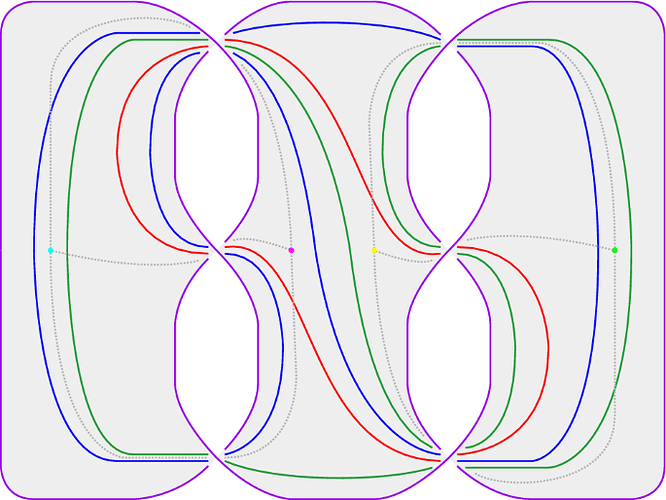(Source: A family of Andrews–Curtis trivializations via 4-manifold trisections | Geometriae Dedicata)
It’s always unsettling to read an article claiming that AI has solved a puzzle that mathematicians have failed to crack for centuries.
The Andrews–Curtis conjecture is one such hypothesis—likely to be proven false—that has engaged many of the top minds in mathematics. I know only a handful of possible counterexamples, and the above image illustrates one way to test whether Andrews–Curtis trivialization can potentially be proven in a confined setting. The abstract structure of this space can resemble multi-layered crossroads, like those found at large highway interchanges.
Based on what was discussed in Scientific American, the reinforcement learning experiment on Andrews–Curtis sounds like a typical side project for a PhD student. When I learned dynamic optimization (a mathematician’s term for reinforcement learning), I often converted static problems into dynamic ones so I could produce time-series–based charts—usually during the first year of a PhD program.
Such computational approaches to Andrews–Curtis amount to nothing more than a brute-force exercise with little to no mathematical value. Without full confirmation that the conjecture holds in certain settings—as discussed in the referenced paper—you can’t meaningfully apply Andrews–Curtis to real-world problems. So far, we only know that Andrews–Curtis can help achieve trivialization in very limited cases. While it has already aided dynamic optimization on computers, that doesn’t mean wasting computing resources on “cool” and “fancy” reinforcement learning projects will help solve a century-old mathematical challenge.
In the end, the Scientific American article reads more like promotion for a team of amateur scientists. People unfamiliar with the true meaning of the exercise might assume the team are AI experts, and the team could then boast about being mentioned in Scientific American, a publication under Nature.
If this is being used as proof of the team’s AI expertise, it borders on fraud.
Back in Korea from 2018 to 2023, I saw many similar cases. Greedy but clueless VCs were easily fooled by such exercises. I hope the Scientific American article has no such agenda—and that VCs in the Western hemisphere are sharp enough to see that this is, at best, just a PhD student’s exercise.
